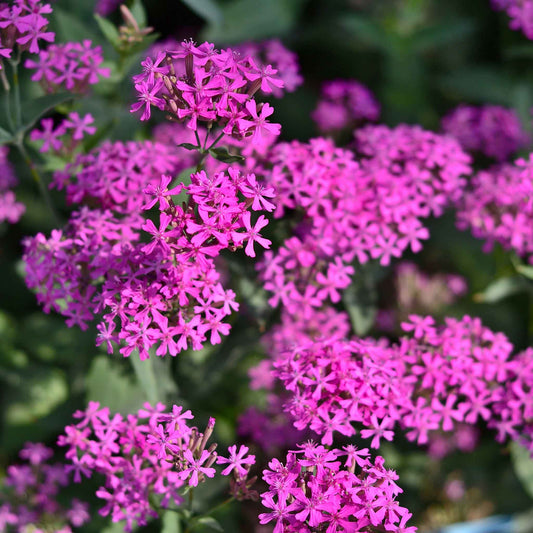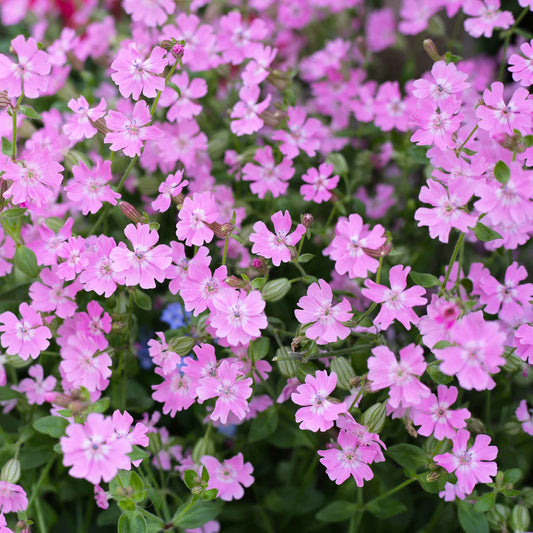-
main-collection-product-grid

Catchfly Seeds
Whether or not the sticky seedpods catch flies, we love the tiny pink bloomsCatchfly Seeds
Whether or not the sticky seedpods catch flies, we love the tiny pink bloomsRegular price As Low As $4.49Regular priceUnit price per -
main-collection-product-grid

Nodding Catchfly Seeds
Drooping flowers signify this plant is perfectly healthyNodding Catchfly Seeds
Drooping flowers signify this plant is perfectly healthyRegular price As Low As $4.49Regular priceUnit price per
All about growing silene seeds
- 2 silene seed varieties
- An excellent container plant
- Fantastic for rock gardens
- Offers lovely and fragrant summer blooms
the many names of silene
A rose by any other name may smell as sweet, and silene is just as lovely in all of its varieties. It also goes by an abundance of names. Known variously as campion, drooping catchfly, nodding catchfly, sweet William, and none-so-pretty—among other titles—this low maintenance wildflower offers clusters of vibrantly colored flowers in mid to late summer. The name catchfly comes from the sticky sap on its stems, which can sometimes trap tiny insects.
planting your own silene seeds
Regardless of variety, plants of the genus Silene should be sown from seed in late fall or early spring. They also make excellent options for container gardening, spilling down over the edges of the pot in a riot of pink or purple. For this reason, they're also beautiful along the tops of garden walls or the edges of other height-graduated landscaping. Plant silene for a touch of color in a garden path, or as a groundcover beneath shrubs like roses to help protect the soil.
Germination of silene is generally easy, and as with many wildflowers it is helped along by the chill of winter or the last frost. Seeds can also be kept in the fridge for three to four weeks before sowing. After planting, keep the soil moist even when the plant has germinated. Hardy in USDA zones 5 through 8, catchfly prefers a moderate shade where the summers get hot. Pests are rarely a problem, and catchfly takes little care. Make sure soil is well-drained, and be careful not to over water.
friends of the silene flower
Recommended companion plants for catchfly include poppies and salvia. Both sweet William and nodding catchfly would be particularly lovely with blue sage or Eden Brothers' May Night Salvia Roots! If you're planting a rock garden, try lavender, echinacea, or yarrow. Asters and bee balm will attract additional pollinators for a butterfly or bee garden!
Though native to Europe, catchfly has been naturalized throughout much of the US, and makes a beautiful addition to wildflower and prairie gardens as well. Prune dead and dying flowers for better growth. Or, if self-seeding is desired, allow the flowers to wilt and wait for seed pods to mature and split.
For more information about planting, growing, and caring for silene flower seed, see the Silene Seeds Planting Guide.

